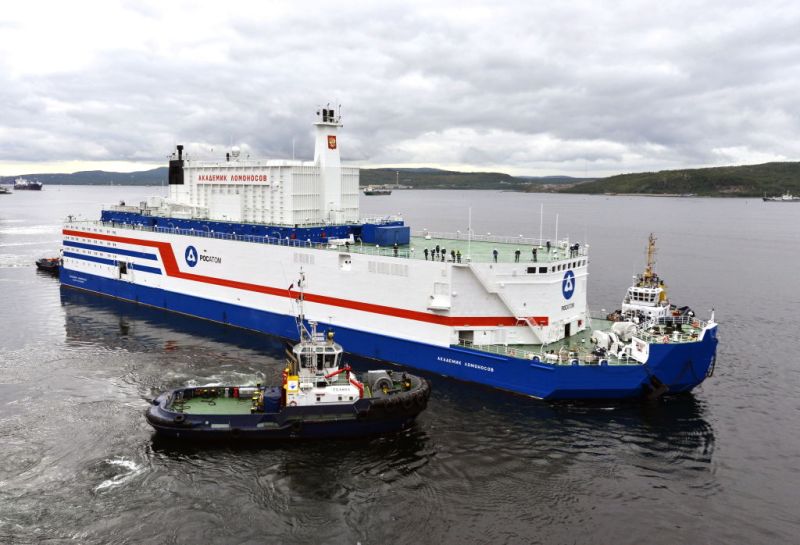Russia has recently launched a floating nuclear power station that will be sailing 3,000 miles from the Arctic port of Murmansk to Chukotka in the far east. The nuclear agency, Rosenergoatom, has said that the Akademik Lomonosov’s mobility will enhance the power supply to the remote areas.
Among the targets of Akademik Lomonosov is the powering of Chaun-Bilibin mining complex located in Chukotka. Chaun-Bilibin mining complex has gold mines as well. However, according to Greenpeace; Akademik Lomonosov is a high-risk during harsh weather environment. Critics, including Greenpeace, have pointed to the previous Russian and Soviet nuclear accidents. They have said that the Akademik Lomonosov poses a risk in the form of polluting the Arctic.
The launch of Akademik Lomonosov has taken place only two weeks after the blowing up of a nuclear-powered engine on a Russian naval test range that is located in the Arctic. The blast took out five nuclear engineers and released radiation as well. The floating power station will have the extremely radioactive spent fuel stored onboard. Other floating plants of similar designs are also slated to serve remote areas. This one will also be used for supplying electricity to offshore oil rigs that are located in the Arctic.
The Northern Sea Route that connects European Russia with the far eastern ports has started becoming navigable for longer spans of time since global warming is taking away ice. Three tugs will be towing the facility to Pevek where it is scheduled to dock by the end of September. During good weather conditions, it will be floating at speeds of 4-5 knots.
The floating power plant was built in St. Petersburg and houses two nuclear reactors of the type that are used in Russian icebreakers. They are KLT-40S reactors that have a combined capacity of 80 megawatts and are known to be tsunami-proof. It has been reported that the nuclear power station will be providing enough power to illuminate and heat a town with 100,000 people living in it. The plant is supposed to operate for four decades.

